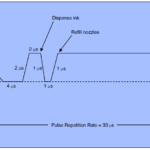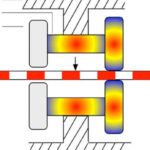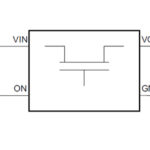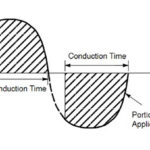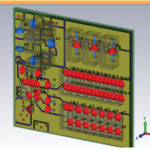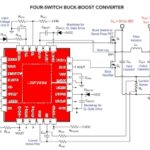Unlike better-known electromagnetic motors, the widely used piezoelectric-based motor/actuator provides precise, repeatable linear motion over short distances, and requires a voltage drive rather than a current drive. Part 1 of this FAQ looked at the moving piezoelectric element of the actuator. Part 2 looks at their drive requirements, which are very different than those of […]
texasinstrumentsinc
FAQ: Piezoelectric motors, Part 1: actuators
Unlike better-known electromagnetic motors, the widely used piezoelectric-based motor/actuator provides precise, repeatable linear motion over short distances, and requires a voltage drive rather than a current drive. When we think “motor”, we usually think of rotating motion or perhaps a special “linear motor” which is a rotary motor which has been rolled out flat. To […]
Load switches, Part 2: IC implementations and benefits
Part 1 of this FAQ looked at the need for the load-switch function for a circuit’s DC rails, the basic implementation using a MOSEFT and driver, and the limitations of this approach. Part 2 looks at what are referred to as load switches, which in this context means ICs designed to implement the load-switch function, […]
Load switches, Part 1: Basic role and principle
Load switches are used to enable/disable power to selected ICs or circuit subsections. Although they don’t get much attention, they are useful for both saving power as well as management of multiple power rails. This FAQ will discuss their function, basic design, advanced IC implementations, and additional benefits of IC load switches. Q: What is […]
Top power electronics stories of 2017
Here are the power electronics features that got the most interest from readers in 2017. Teardown: Inside Ikea’s smart LED bulb As smart LED bulbs go, this one is pretty simple. It doesn’t incorporate any sort of smartphone app and can’t be controlled over the Internet, like some other smart bulbs […]
Solenoids and relays, Part 1
Just hearing the words “solenoid” and “relay” may conjure up visions of an ancient electromechanical word, now largely replaced by all-electronic devices, smart motors, and more. That almost makes sense, as these two components in various forms have been with us for over 150 years. But don’t be fooled; both are still vital devices, and […]
Dimming LEDs
As the use of LEDs for area lighting has grown dramatically, with both the use of LED-based replacement bulbs as well as LED-based fixtures for new construction (called luminaires in the trade), the issue of dimming these LEDs becomes more critical. LEDs require a very different technique for dimming than the conventional legacy incandescent bulb. […]
Better high-frequency power design through EM simulation
Here’s how a 3D EM simulation can be used to accurately gauge gate-driver trace inductance. JOHN RICE | TEXAS INSTRUMENTS INC. HIGH ELECTRON MOBILITY TRANSISTORS (HEMTS) were first introduced in the early 1980s and are touted for their exceptional switching qualities. These so-called heterojunction, field effect transistors (FETs) were originally developed for high-frequency RF power […]
Gallery: Scenes from Texas Instruments’
power supply design seminar
Chip maker Texas Instruments has been touring the country with its one-day seminar covering topics in power supply design. A demo room is part of the proceedings. We stopped by at the Cleveland, Ohio seminar to take a look. Here are a few of the more interesting circuits and displays we found set up there. […]
A better way to squelch transients
Modern dc-dc converters can double as compact transient suppressors in vehicular electrical systems characterized by a lot of hash on the battery power lines. By TIMOTHY HEGARTY, Non-isolated Power Solutions, Texas Instruments, Inc. THE proliferation of electronic subsystems in vehicles has created a need for small, inexpensive and highly reliable electronics able to operate in […]

